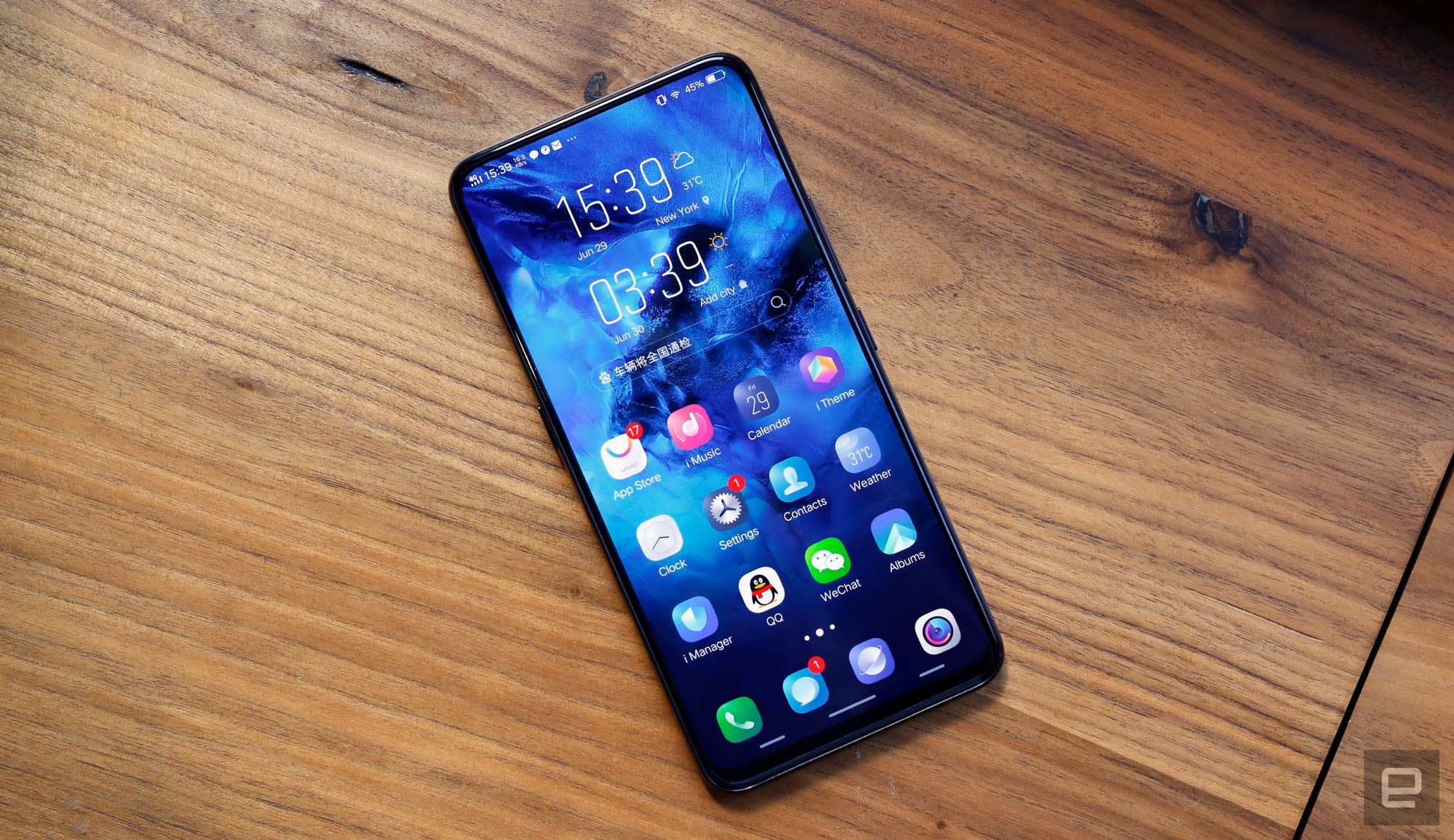 More than anything, Vivo's NEX S is a fascinating machine. From a distance, it seems like any other big-screened smartphone. Look more closely, though, and the ambition becomes strikingly clear. An in-display fingerprint sensor? A pop-up selfie camera? This is no ordinary phone. I've been using it for a few days now -- or trying to, anyway -- and it's an excellent example of a Chinese company embracing new technologies and taking risks. That said, if you were thinking about importing one from China for the sheer novelty of it all, you should really hold off. The first thing everyone notices about the NEX S is its screen -- it stretches almost completely across the phone's face without a notch in sight. Vivo went with a 6.59-inch AMOLED display, and you'd be hard-pressed to find another smartphone out there with a better screen-to-body ratio. The only one I can think of is Oppo's similarly ambitious Find X, and it's worth noting that Chinese conglomerate BBK Electronics controls both the Oppo and Vivo brands, so the competition here is mostly internal. In any case, it's a bright, punchy screen, though it only runs at 1080p -- that means it's quite a bit less pixel dense than other smartphones on the market. Crafting a phone with basically no bezels meant Vivo had to rethink how to lay out some important components, and ditch others altogether. Just look at the phone's earpiece. Oh wait, sorry, there isn't one. Instead, Vivo built a vibrating exciter beneath the screen that basically turns the entire panel into a speaker. I've only taken a handful of calls on the NEX S so far, but I was surprised at how well that actually works. I was even able to hear the other party chattering on after pulling the phone away from my face. And then there are the cameras. You'll find a dual camera system around back that combines a 12- and a 5-megapixel sensor for bokeh-filled portraits. Shots taken with the NEX's main camera were on the pleasant side of adequate, but honestly, no one ever going to buy this thing because of that. The phone's real claim to fame is the 8-megapixel selfie camera that rises up from the top of the chassis with a vaguely Star Trek-sounding audio cue. I was skeptical about how well this overly complex system would work, but you know what? It functions as well as advertised -- for now, anyway. 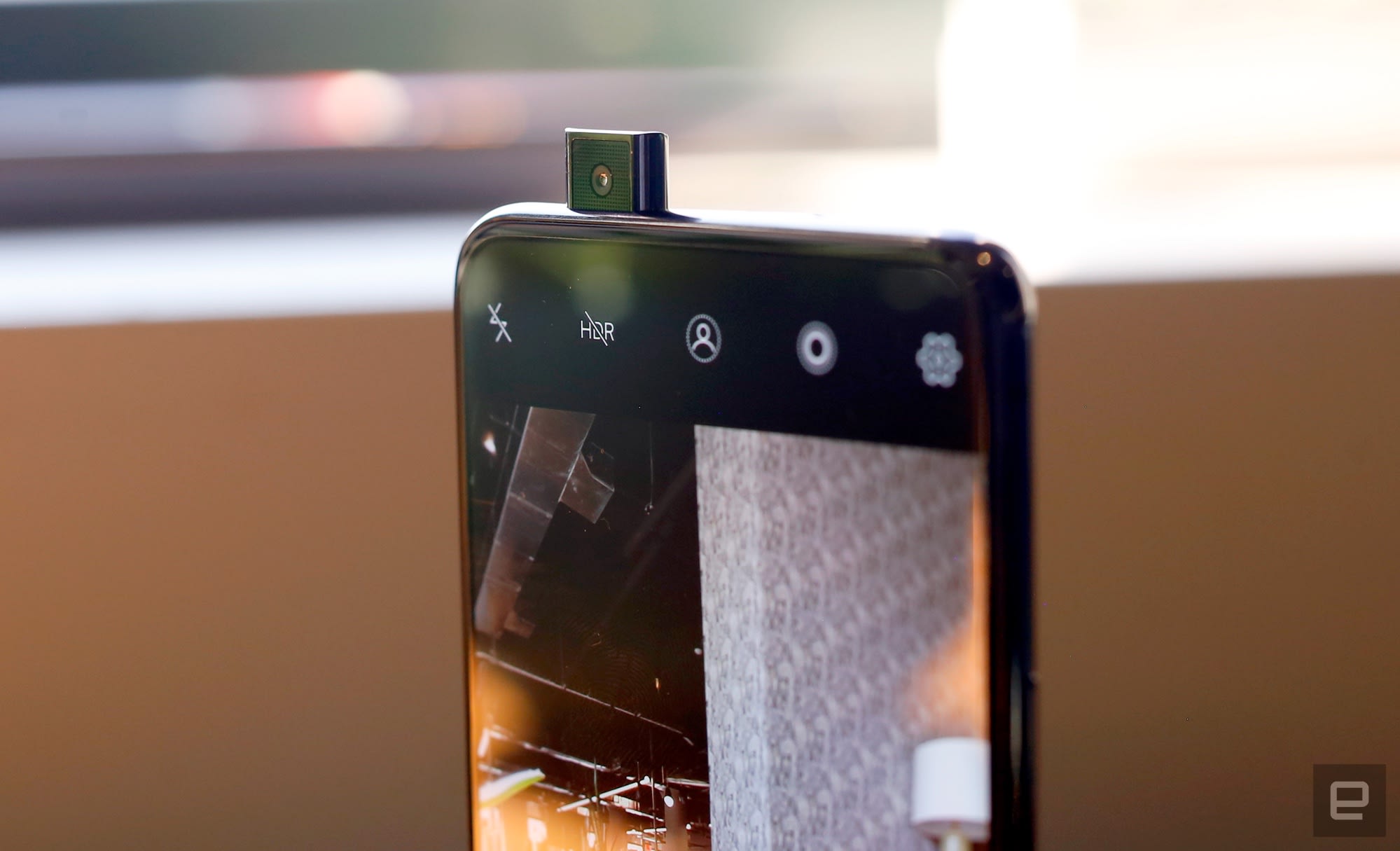 Chris Velazco/Engadget It takes about one second for the camera to lock into place, and Vivo has said its engineers have fired up the selfie camera more than 50,000 times without issue. That's a lot of self-portraits, and even some as self-obsessed as me couldn't imagine snapping that many photos of my dumb face. That said, I can think of at least one person around the Engadget office who could probably burn through 50,000 selfies in a couple weeks. Vivo clearly has faith in the camera's mechanical longevity, but I'm more concerned about what happens when someone inevitably drops this thing. After all, this is a BIG phone -- the chances of it taking a tumble while someone tries to reach the shutter button are well north of zero. The prospect of ruining that camera is made extra cringe-worthy by the fact that it actually takes decent selfies. They're bright and lively, though they're not as detailed as what you'd get from, say, an iPhone X or one of Google's Pixel 2s. 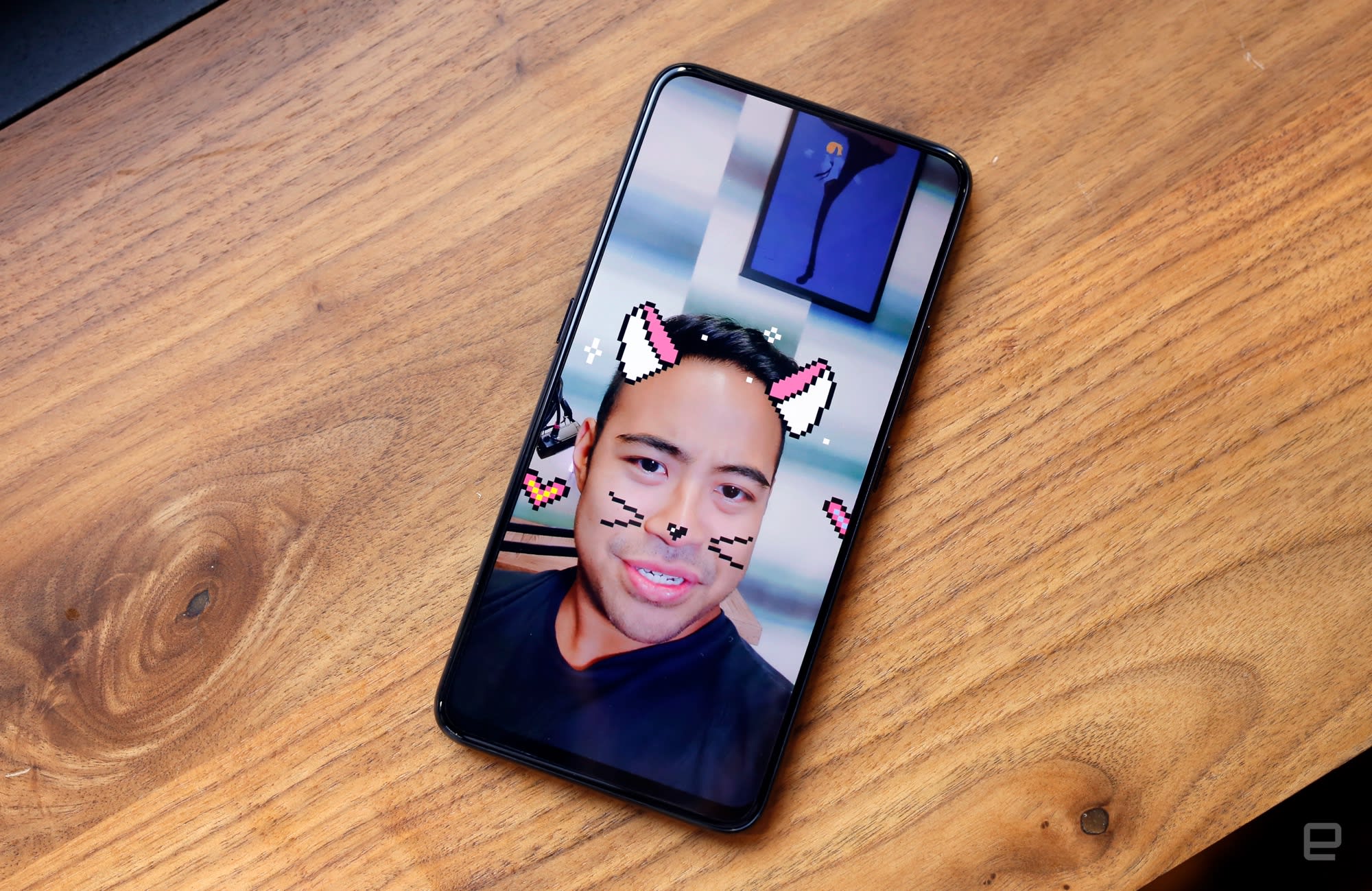 Chris Velazco/Engadget Rather than squeeze a traditional fingerprint sensor on the NEX's side or back, Vivo said to hell with it and stuck one underneath that big display. We've seen these new sensors demoed pretty frequently in the recent past, but this is one of the first in-display fingerprint sensors in a commercially available smartphone. It's easily the best one I've tried so far, but that doesn't change the fact that the sensor is noticeably slower than the traditional fare you'd find on say a Galaxy S9. This occasional sluggishness was to be expected -- these sensors are very new, after all. There's no face unlock here as a backup, either. With that pop-up camera it would take way too long to be useful. So, like I said, this is a fascinating device. But, it's definitely not one I'd recommend western users import and use daily, though. For one, even with the system language set to English, you'll find loads of preloaded Chinese software to deal with. I've done my best to explore what it does but my Mandarin doesn't extend much further than "how are you?" and "I want to eat something." 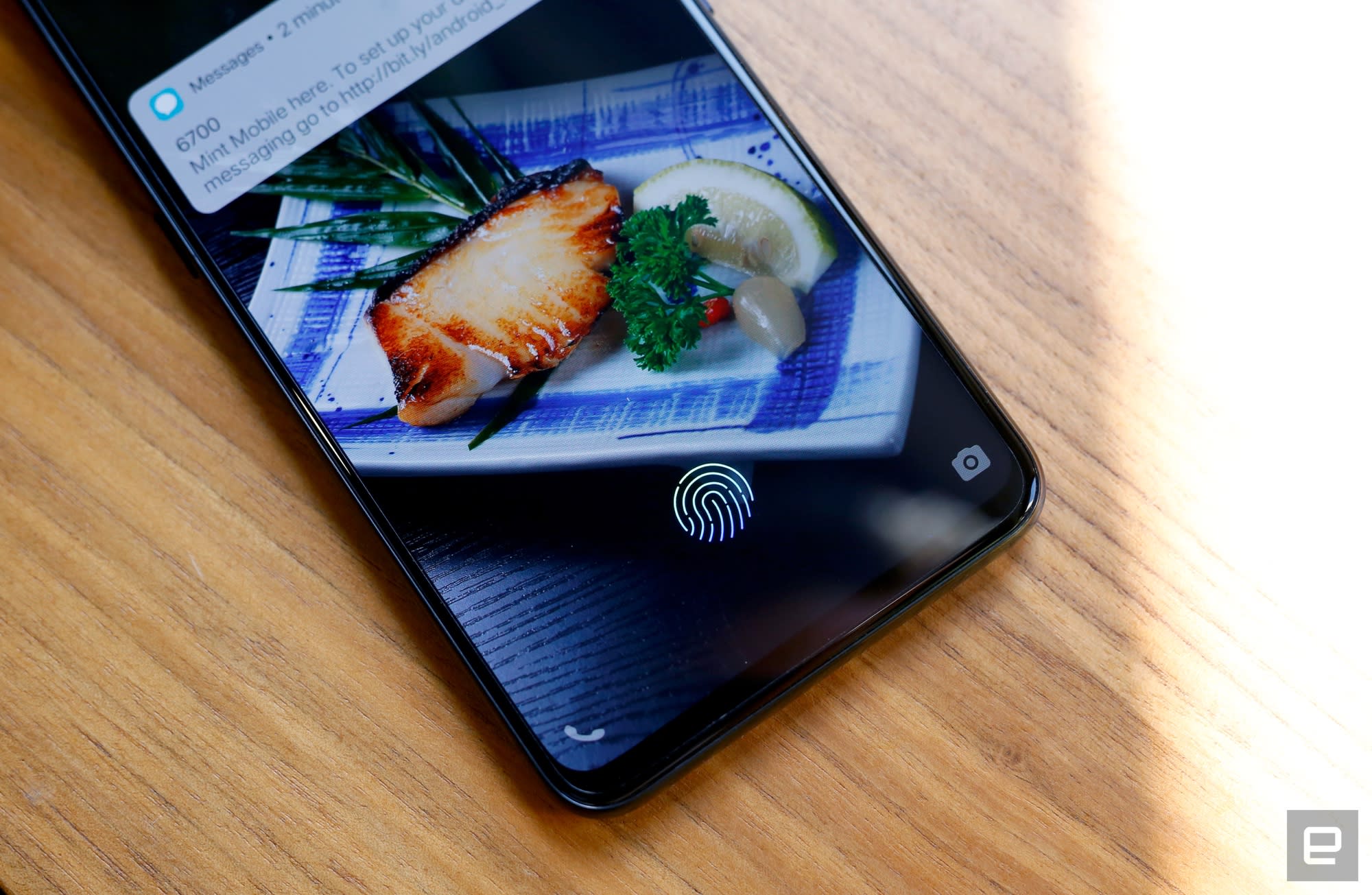 Chris Velazco/Engadget Beyond that, they're often -- and obviously -- tied to service that are of little use outside the NEX's home country. I don't know about you, but I'm hardly ever struck by the urge to buy something off of Taobao. (That said, watching videos through China's iQiyi streaming service has been educational, to say the least.) The lack of Google Play services on this version of the phone is tricky too. While you can link your Gmail account to the preloaded Mail app, you'll have to sideload most of the apps you'd actually want to use since the included Vivo Store remains incomprehensible to foreigners. 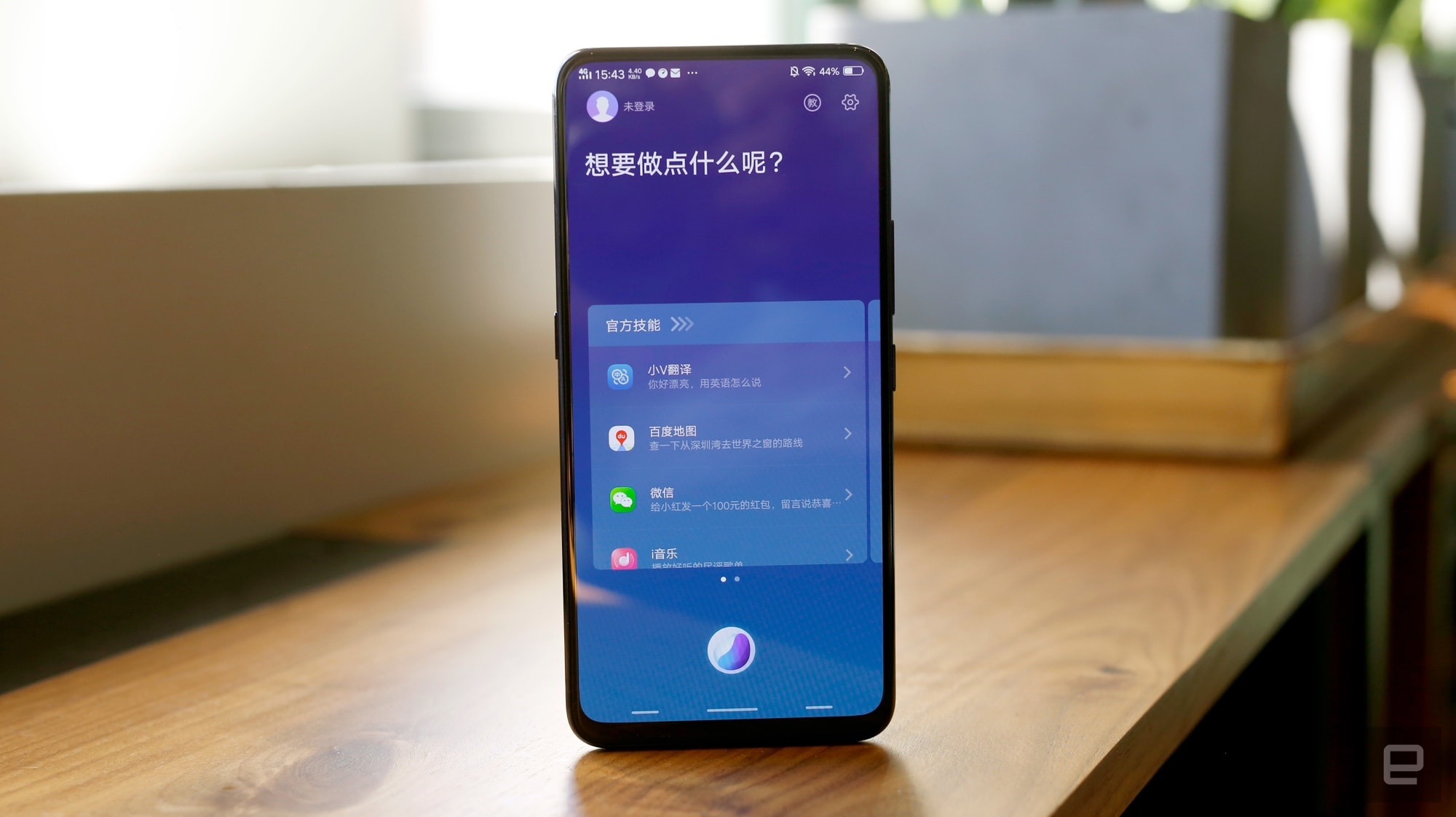
There's more. Despite the fact that this VIVO has top tier components like a Snapdragon 845 chipset, 8GB of RAM and 256GB of storage, it doesn't feel nearly as fast as other phones I've tested this year. At this point, I can only blame Vivo's overwrought Funtouch OS. It's derived from Android 8.1 Oreo, but Vivo layered a ton of of extra stuff on top. It's worth noting that Funtouch's interface also takes a lot of design cues from iOS, to the point where it's almost laughable. If you're going to build a phone this unique, wouldn't you want a interface that didn't feel like a laggy copycat of something else? I don't mean to take anything away from Vivo by saying these things -- on a technical level, the NEX S is a remarkable machine, and it gives me hope that the brand will continue to break new ground. Vivo is slowly expanding its global presence too, so one day we Americans might actually be able to pick up one of the company's curious phones without the hassle of dealing with overseas sellers. For now, though, you shouldn't feel too bad it's honestly one of those devices that's much more fun to admire from afar than use everyday.
via Engadget RSS Feed https://ift.tt/2KwCWs2 |
Comments
Post a Comment